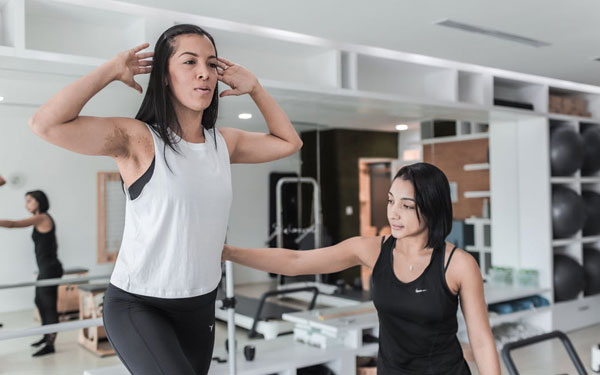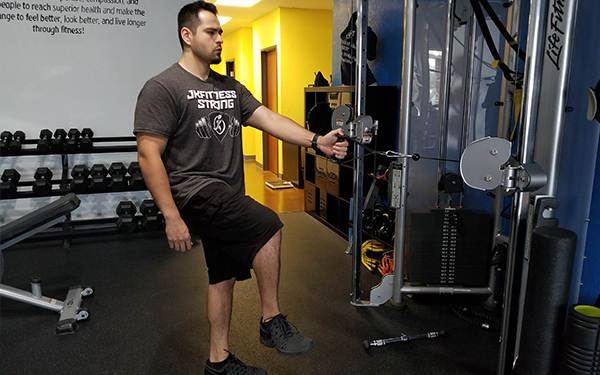If you have an injury such as an arthritic shoulder, low back pain, knee pain, or some other physical or medical limitation; do not stop being physically active or engaging in regular exercise. The key is understanding how to work around your limitations; once you understand how, exercise can be one of your biggest advocates in helping you overcome your limitation.
Unfortunately, many people lack experience or guidance on how to exercise with an injury. Before you start, always check with your doctor to be cleared to exercise. After you’ve been cleared, follow some of these general guidelines:
- When selecting an exercise consider the volume, technique, number of repetitions, as well as your current physical condition.
- Executing proper form is vital in order to get the full benefit of exercise without further injuring yourself. A qualified personal trainer, exercise physiologist, physiotherapist, physical therapist or sports medicine doctor can ensure your form is correct as well as guide you toward safe exercise according to your physical condition and limitations.
- Be in tune with your body’s signals that indicate there is pain, fatigue, or distress caused by a certain exercise. A good rule to follow is that you should not feel joint pain while performing an exercise, but rather a warming sensation in the muscles. If you do feel any joint pain, modify or switch exercises to decrease further aggravation to the particular joint.
- Avoid over training by not going too fast, too hard, too long and/or not allowing proper recovery time. Your body must have time to recover; otherwise the body fatigues quickly and your risk of injury increases.
- As your body begins to heal, gradually, and progressively increase the intensity of your workouts. Allow the muscles to get acclimated to exercise again.
“No pain, no gain” does not necessarily apply when allowing the body to heal from an injury. The human body has very specific biomechanical pathways that we must adhere to if we want to be injury-free. Guidance on proper form and knowing the limitation of your physical condition can prevent further injuries that would ultimately put your fitness on hold. Aim to recovery from any current injury or condition and then focus on increasing your overall health and fitness.

Article Written by:
Michaela Scroggins, M.Ed., NSCA-CPT
JKFITNESS, LLC







As a practising physical therapist at healthclues, i want to mention that proper sequence of an intense workout should be: Warm up, Light stretching 40 – 50 minutes of intense resistance training, Intense stretching the last ½ of the intense resistance session, Cool down.